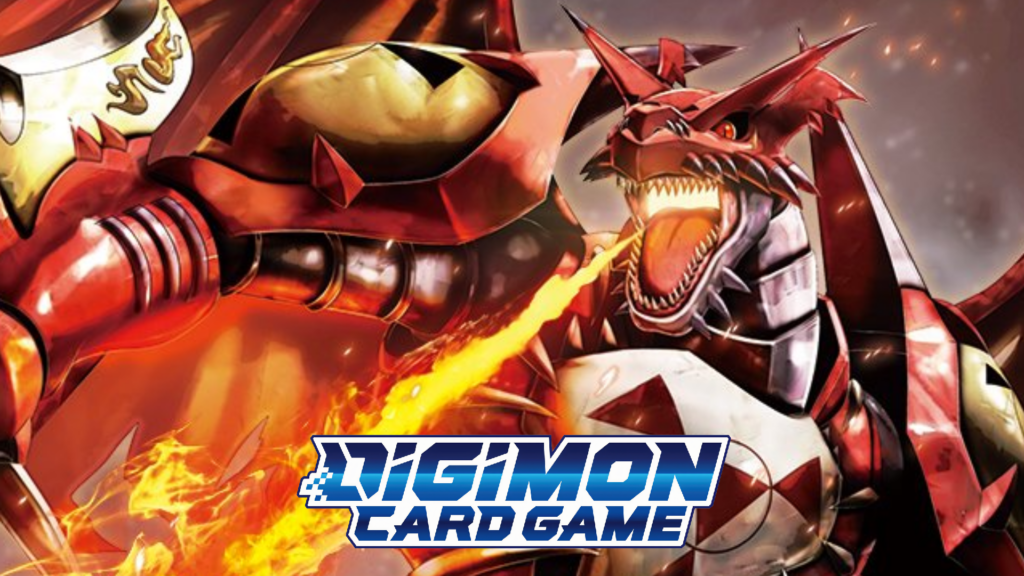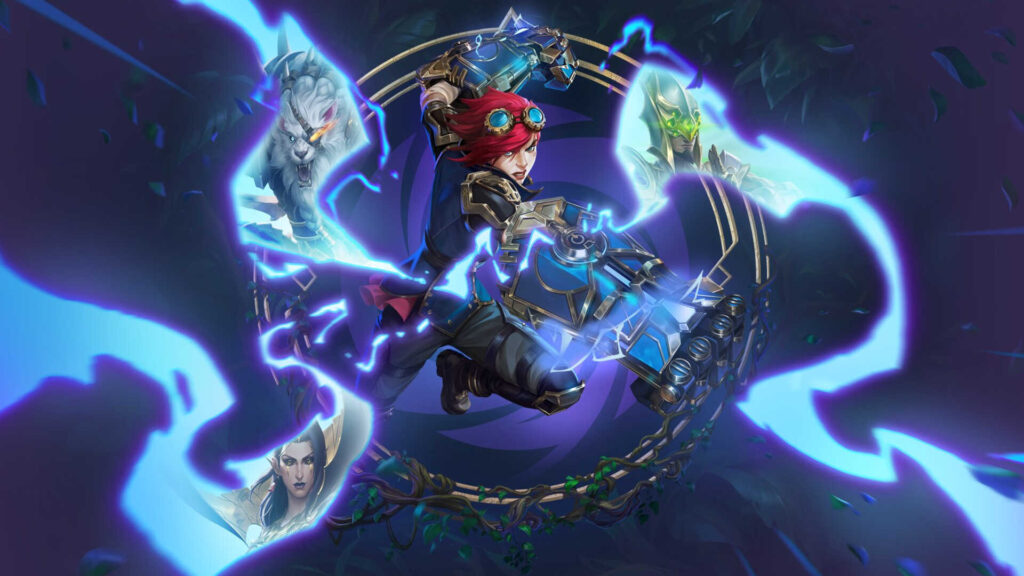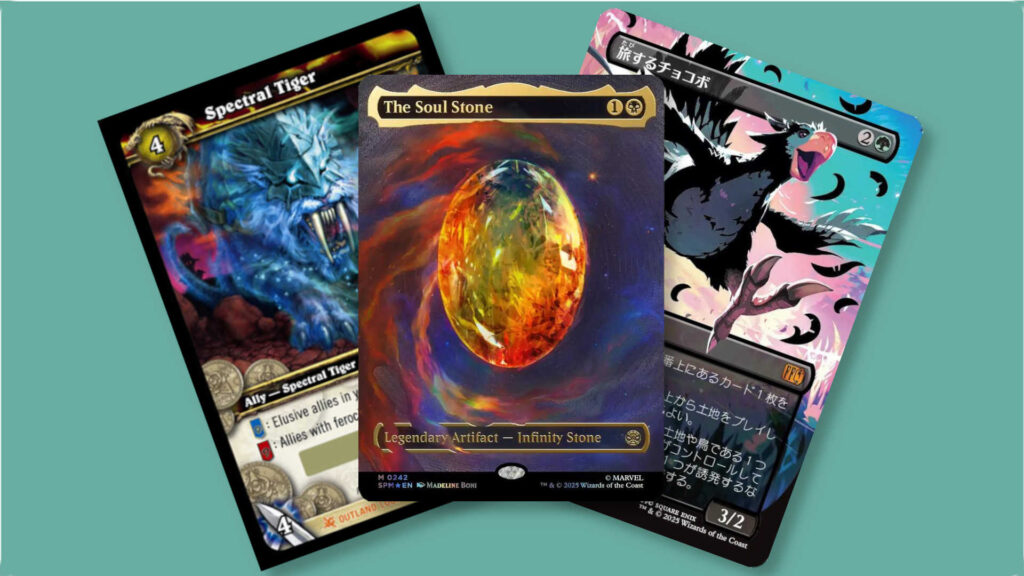Image credit to author/Bandai
It’s rare for a deck to pop up out of nowhere and cement itself as a pillar of the competitive metagame. Prior to the release of BT21 World Convergence, Megidramon BT21-079 was on very few people’s radar as a viable deck. Blowing up the entire board was a novel effect, but deleting itself in the process seemed counterintuitive. All that changed with the Gigimon P-177 from the Store Tournament 2025 Vol. 2 Participation Pack. Suddenly, that stack you deleted could recur itself from the trash and continue pressuring the opponent. Combine that with Megidramon’s natural Security Attack +1 and you have the foundation for a solid aggro deck.
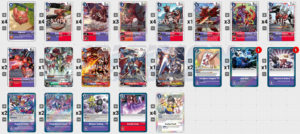
3 Gravity Crush BT1-090
1 Gallantmon BT13-111
4 Guilmon BT21-064
4 Growlmon BT21-068
4 WarGrowlmon BT21-076
4 Megidramon BT21-079
2 The Digimon I Designed BT21-100
1 Jack Raid BT4-111
1 Calling From the Darkness BT7-107
4 Analog Youth EX1-066
1 Growlmon EX3-057
4 Guilmon EX4-006
3 Guilmon (X Antibody) EX8-009
3 Growlmon (X Antibody) EX8-012
2 WarGrowlmon (X Antibody) EX8-015
1 MedievalGallantmon EX8-074
2 Purple Scramble LM-032
2 Purple Memory Boost! P-040
3 Wisdom Training P-108
4 Gigimon P-177
1 Gallantmon P-186
Table of Contents
ToggleHow Does the Megidramon Deck Work?
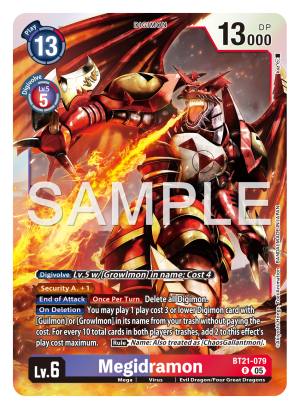
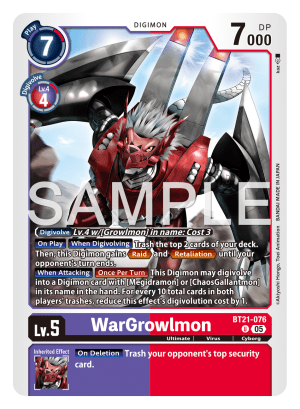
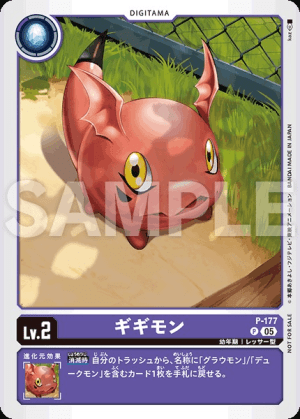
Megidramon functions like a combo deck. You build up a stack with Wargrowlmon BT21-076 and attack to digivolve directly into Megidramon BT21-079. This hits for two security checks, and when the attack is over, Megidramon deletes every Digimon in play. This triggers Wargrowlmon’s inherited effect to trash a security card as well as Megidramon’s effect to play a card with Guilmon or Growlmon in its name from your trash. Usually this grabs Guilmon EX4-006 since it has rush, and the Gigimon inherited effect returns a Growlmon, Gallantmon, or Megidramon to your hand to build up the chain once more.
Most of your other inherited effects gain memory on deletion so even if you pass turn digivolving into Megidramon, you can take it right back and continue your plays. Analog Youth also plays a role here since it gains memory when Megidramon is deleted as well as hatches a new egg so you can build up a stack in back to attack next turn just in case you can’t finish them off right away.
Since this deck also functions as a self-mill deck, it also makes great use of Gallantmon BT13-111 and Gallantmon P-186. These can be played for a reduced cost of two memory for every five cards in both players’ trash. With 30 cards in trash between both players, these are essentially free so you can play Gallantmon BT13-111 for one memory, attack, and then since there’s a Digimon with 13000DP in play, you can play Gallantmon P-186 for free and attack for those last checks.
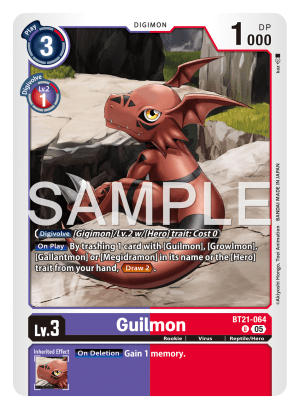
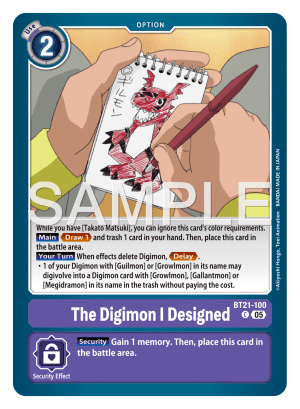
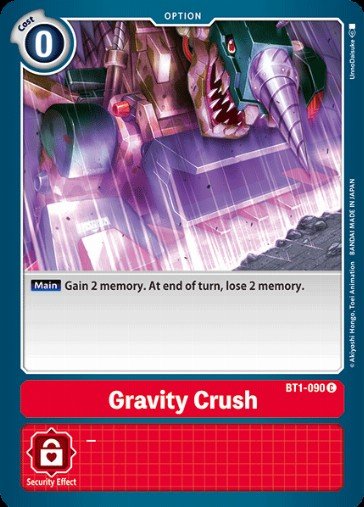
The rest of the deck is centered around assembling the combo. Wisdom Training, Analog Youth, and Purple Memory Boost are fantastic for digging for missing pieces, and Guilmon BT21-064 and Growlmon (X Antibody) EX8-012 can draw and trash to dig down even further. This deck also has a memory gain package to facilitate the combo turn. Although Jack Raid was restricted to one copy, Megidramon can still make great use of it since it fills the trash so quickly.
In addition to the Purple Memory Boost, this is one of the few decks that can safely use Gravity Crush to extend its plays. I say safely because, despite the drawback of giving your opponent two memory at the end of turn, Megidramon is a combo deck. You don’t actually have to give them the memory if you just win the game before that point!
The final piece of the puzzle is the signature option card The Digimon I Designed. This helps you dig through your deck, and then when one of your Digimon deletes a Digimon by an effect, you can digivolve into a card with Growlmon or Gallantmon in its name from your trash. What makes this so powerful is that when you go for the combo and Megidramon blows up the board, you can stack The Digimon I Designed as a pending effect so you can digivolve over whatever Digimon you grab from the trash with Megidramon’s [On Deletion] ability. Often this means cheating in Wargrowlmon and then immediately digivolving into a rush Gallantmon to swing for game. You can also digivolve into MedievalGallantmon if you don’t have the win and want to shut off the opponent from building a board on their turn.
Why Is This Deck Good Against the Meta?
Megidramon is a strong contender in the current metagame because it has a true board wipe, something that Digimon TCG simply hasn’t had before. There have been functional board wipes in the past such as DeathXmon and X Program, but these often come with conditions. Megidramon just has to survive attacking and it explodes. Even if it doesn’t survive the security checks, the stack is build in such a way that it quickly replaces itself to continue the pressure. As well, since the ability is worded [End of Attack], even if Megidramon is blocked you still get to blow up the board.
This is a deck that can get its combo started with just a level 5 and can quickly burn at minimum three security cards in one hit. Taking out three security cards as early as turn 2 is nothing to scoff at as well as the fact that, unlike most aggro decks, Megidramon makes sure the opponent can’t kill you on the following turn. The deck has multiple ways to recur the combo pieces it mills, and the power of its effects scale with the number of cards in both players trash so your cards get stronger the more Digimon you delete. Furthermore, between the rush Guilmon and your Gallantmon that you can either cheat into play or play for a considerable discount, the deck has several finishers to close out the game post-Megidramon.
Most decks in the meta are focused on their board presence and tend to invest a lot of resources into their main stack. The more defensive decks will shift focus to establishing singular large blockers to hold off Digimon with extra security attack. Megidramon preys on both of these types of decks since it can waste the opponent’s stack and clear the board even through blockers, and once the coast is clear, quickly build up into a new stack to get those security checks. Even if Megidramon is deleted without the end of attack trigger, there’s so much value built into your stack being deleted that it’s often correct to swing into larger blockers just to get the deletion triggers.
Where Can Megidramon Struggle?
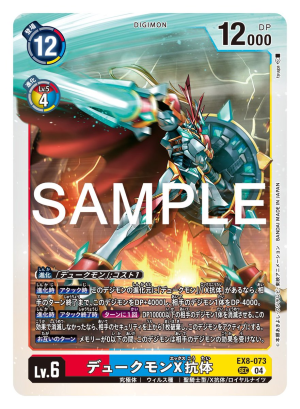
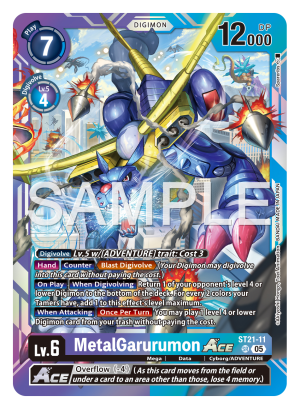
Some of the harder matchups for Megidramon are against decks that rely on ACE cards like Adventure, or decks that build up a threat that’s immune to Digimon effect like Magnamon X. ACE cards can be tricky since so much of the combo is predicated on having Megidramon get deleted, so an ACE Digimon that de-digivolves or bounces a Digimon can be devastating. While the de-digivolve is hard to play through, Wargrowlmon X can prevent your stack from being bounced. You do have to manually digivolve into Megidramon since you miss out on Wargrowlmon’s attack trigger, but since Wargrowlmon X also deletes a Digimon when digivolving, you can use this to trigger The Digimon I Designed and digivolve into Megidramon from your trash for free.
Decks with immune threats can usually bypass Megidramon’s end of attack trigger, so for these decks the trick is to overwhelm their defenses with multiple rush bodies. Building up a kamikaze stack with Growlmon X’s lingering digivolve trigger to play out a Guilmon in addition to Megidramon’s deletion trigger can help you go around the singular defender. While you don’t get that initial three-security burn, Wargrowlmon’s inherited effect still trashes one security so you can keep pushing damage. Your rush package with Guilmon and Gallantmon play a pivotal role in these matches.
In a similar vein, Gallantmon X can also be troublesome, but you can usually push the memory gauge to your opponent’s side as you digivolve into Megidramon so it will be vulnerable when Megidramon blows up. Then you can gain your memory back from your inherited effects to take the turn back. This matchup can be difficult as they use a lot of the same pieces for recursion as Megidramon, so it’s important to keep applying pressure and don’t give them too much memory so they can’t rebuild into a new threat.
Final Verdict: Why Should I Build Megidramon?
You should build Megidramon if you enjoy decks that hit hard and play like a puzzle to assemble. Half of the fun is finding the lethal line after Megidramon explodes, and it’s just so satisfying to push up from security and win the game on the spot. The Megidramon deck has cemented itself as a competitive powerhouse in both local and regional events with multiple top 8 finishes, so its safe to say that the deck isn’t going away any time soon.

